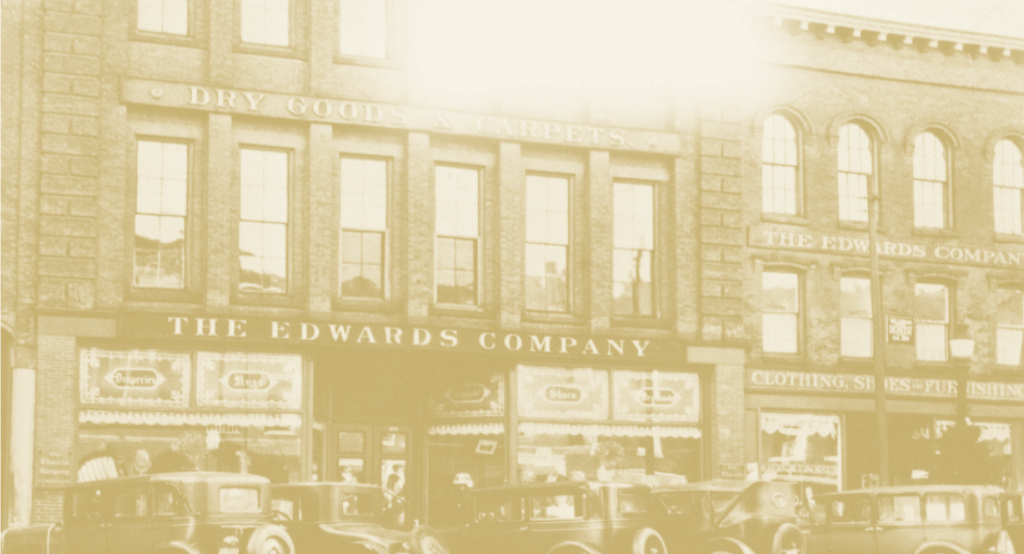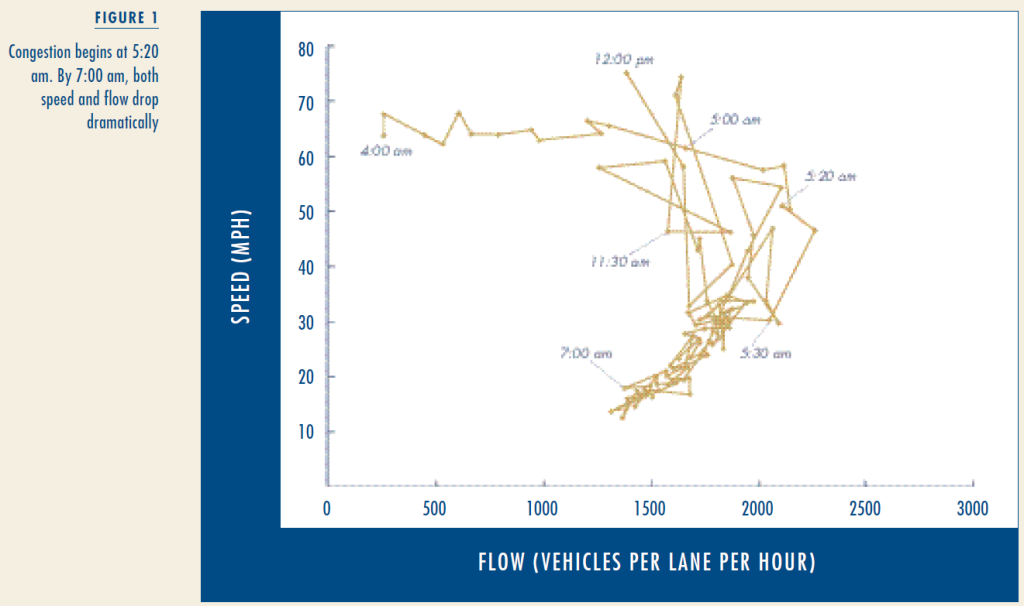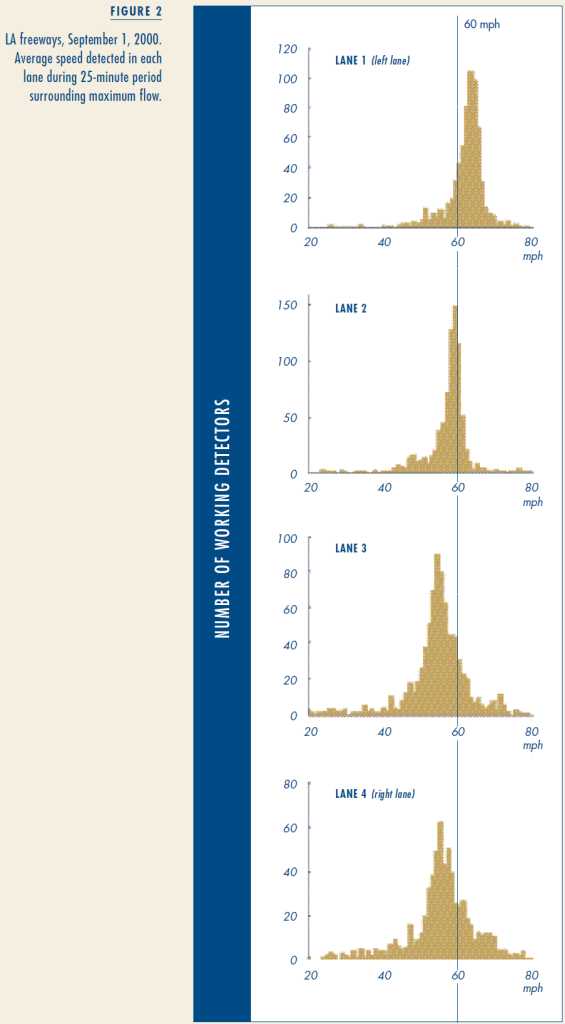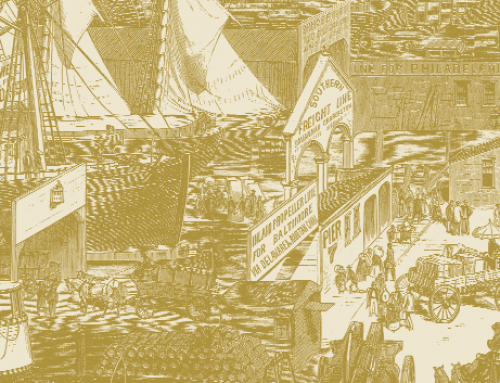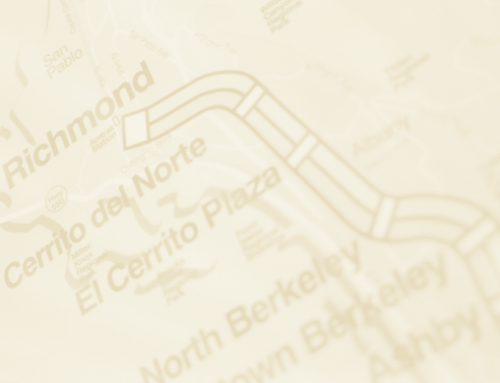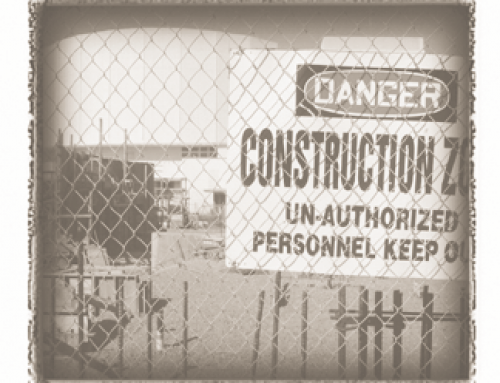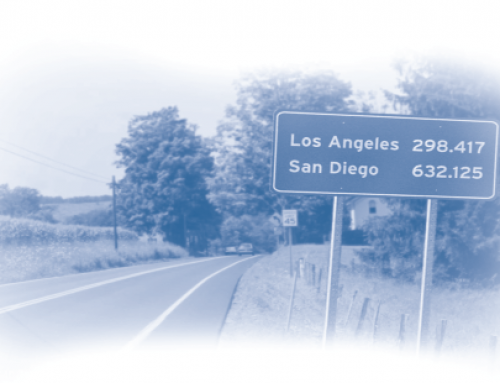Traffic congestion on a freeway sets in once the density of vehicles exceeds a certain critical number. Above that, both vehicle speed and vehicle flow drop precipitously. Well-designed ramp meters can limit the number of vehicles entering a freeway, so that critical density is not reached, congestion is avoided and, paradoxically, both speed and flow increase. This double gain of reduced travel time and increased flow far exceeds any improvements that can be achieved by constructing more freeway lanes.
Figure 1 shows the cause and consequence of congestion. It plots speed vs. flow on the fast lane on one section of west- bound I-10 in Los Angeles from 4:00 a.m. to noon. Until 5:10 a.m. there is no congestion—a flow of 2,100 vehicles per hour (vph) moves at 58 mph. By 5:30 a.m., the density doubles, causing congestion, and speed drops to 30 mph. At 7:00 a.m., speed is a stop-and-go 15 mph, and the flow decreases to 1,300 vph. Only at 11:30 a.m. has demand and the resulting density decreased sufficiently to restore the free-flow speed of 60 mph. In the depth of congestion at 7:00 a.m., efficiency of this section is 15 percent, down from 100 percent at 5:00 a.m.
Figure 2 gives the macroscopic picture for all of Los Angeles. We examine data from all 3,363 functioning detectors at 1,324 freeway sections in LA for the 12-hour period beginning at midnight on September 1, 2000.
For each detector we find the 5-minute interval during which the detector records maximum flow. We then find the average speed at each detector during the 12.5 minutes before 12.5 after this maximum-flow interval. The figure plots the distribution of this “speed at maximum flow” for each lane. Clearly, maximum flow occurs at free-flow speeds ranging from 65 mph in lane 1 to 55 mph in lane 4. These data show that:
- The most efficient freeway operation occurs when traffic is moving freely at 60 mph and not at 35 to 45 mph as is commonly assumed.
- Ramp metering, which controls vehicle entry so that traffic moves freely, will reduce travel time and increase flow, permitting optimum efficiency of the freeway.

